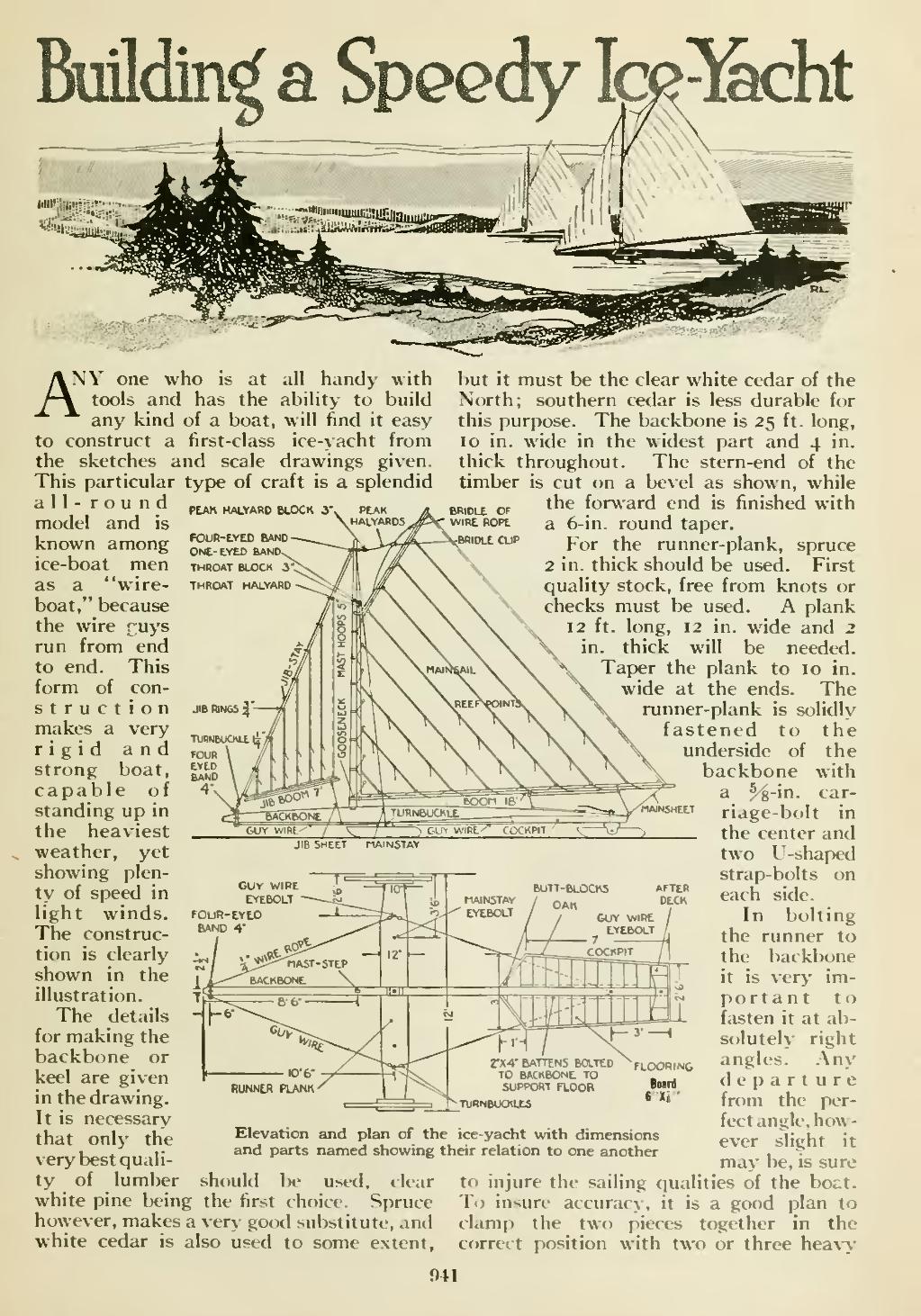Building a Spoedy fe%cht
�� ��� ��PtAK HALYARD BLOCK 3'
FOUR-EYtD BAND ONE-EYED BAND THROAT BLOCK 3 THROAT HALYARD
��JIB RINGS I -
��/INY one who is at all hand),- with AA tools and has the ability to build any kind of a boat, will find it easy to construct a first-class ice-yacht from the sketches and scale drawings given. This particular type of craft is a splendid a 1 1 - round model and is known among ice-boat men as a "wire- boat," because the wire ruys run from end to end. This form of con- struction makes a very rigid and strong boat, capable of standing up in the heaviest weather, yet showing plen- ty of speed in light winds. The construc- tion is clearly shown in the illustration.
The details for making the backbone or keel are given in the drawing. It is necessary that onl}' the \ery best quali- ty of lumber
���FOUR tYLD BAND
4-.
��GUY WIRE EYEBOLT rOUR-tYLD BAND 4'
��BUTT-BLOCKS OAK
GUY WIRE EYEBOLT
7
��AFTER DECK
���Elevation and plan of the ice-yacht with dimensions and parts named showing their relation to one another
��should be used, clear white pine being the first choice. Spruce however, makes a very good substitute, antl white cedar is also used to some e.xtent,
��but it must be the clear white cedar of the North; southern cedar is less durable for this purpose. The backbone is 25 ft. long, 10 in. wide in the widest part and 4 in. thick throughout. The stern-end of the timber is cut on a bevel as shown, while the forward end is finished with a 6-in. round taper.
For the runner-plank, spruce 2 in. thick should be used. First quality stock, free from knots or checks must be used. A plank 12 ft. long, 12 in. wide and 2 in. thick will be needed. Taper the plank to 10 in. wide at the ends. The \ runner-plank is solidly fastened to the \ underside of the backbone with a ^-in. car- riage-bolt in the center and two U-shaped strap-bolts on each side.
In bolting the runner to the backbone it is very im- portant to fasten it at ab- solutely right angles. Any departure from the per- fect angle, how- ever slight it may be, is sure
��to injure the sailing qualities of the boat. To insure accuracy, it is a good plan to clamp the two pieces together in the correct position with two or three hea\">'
��041
�� �
